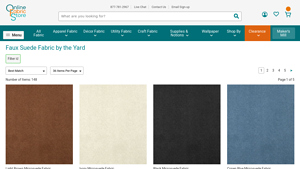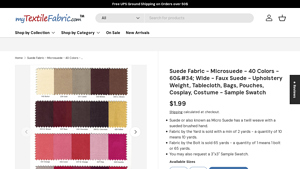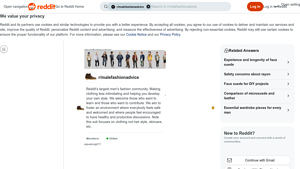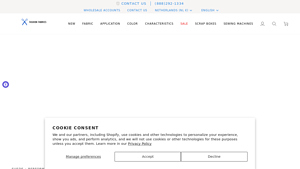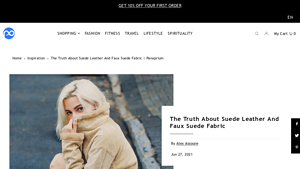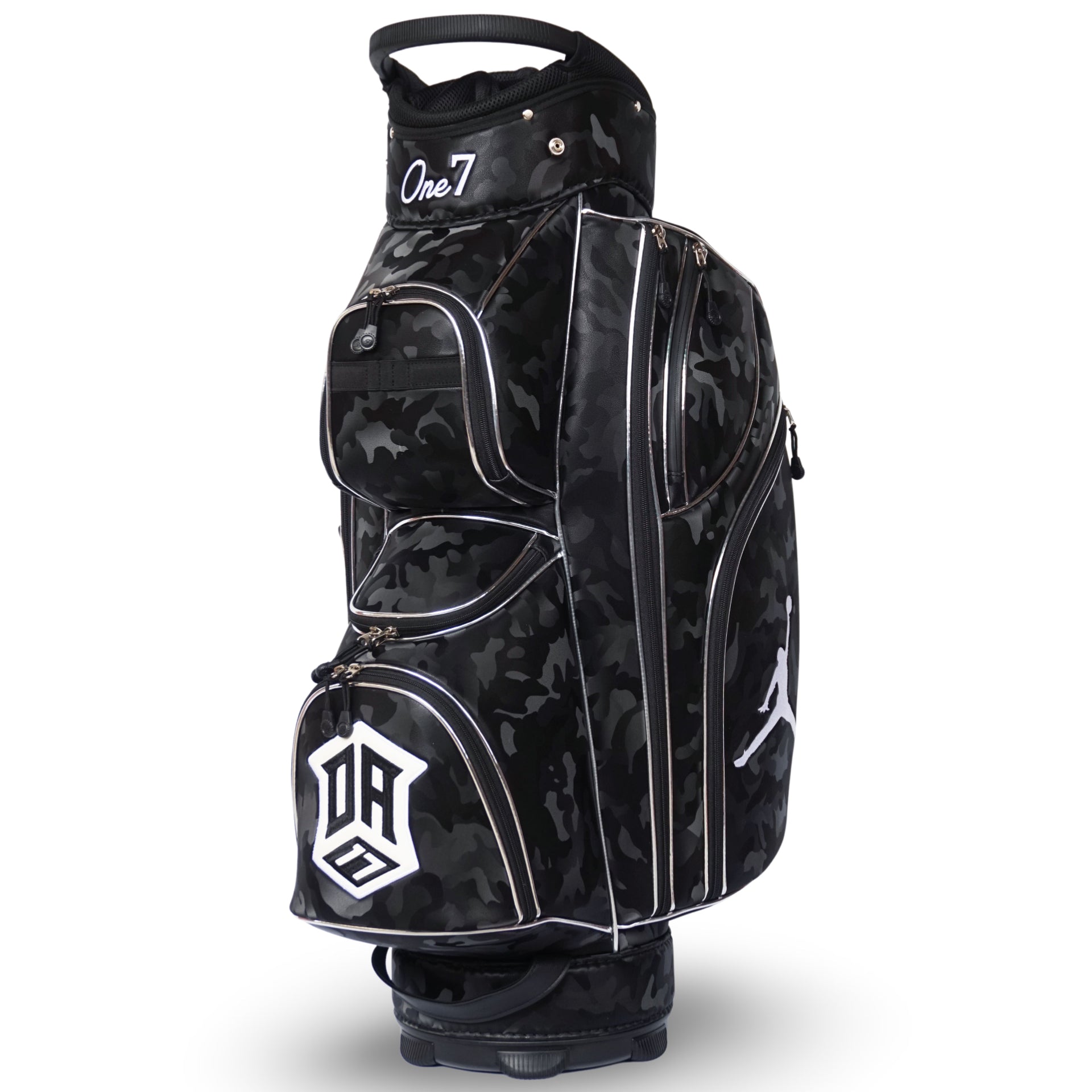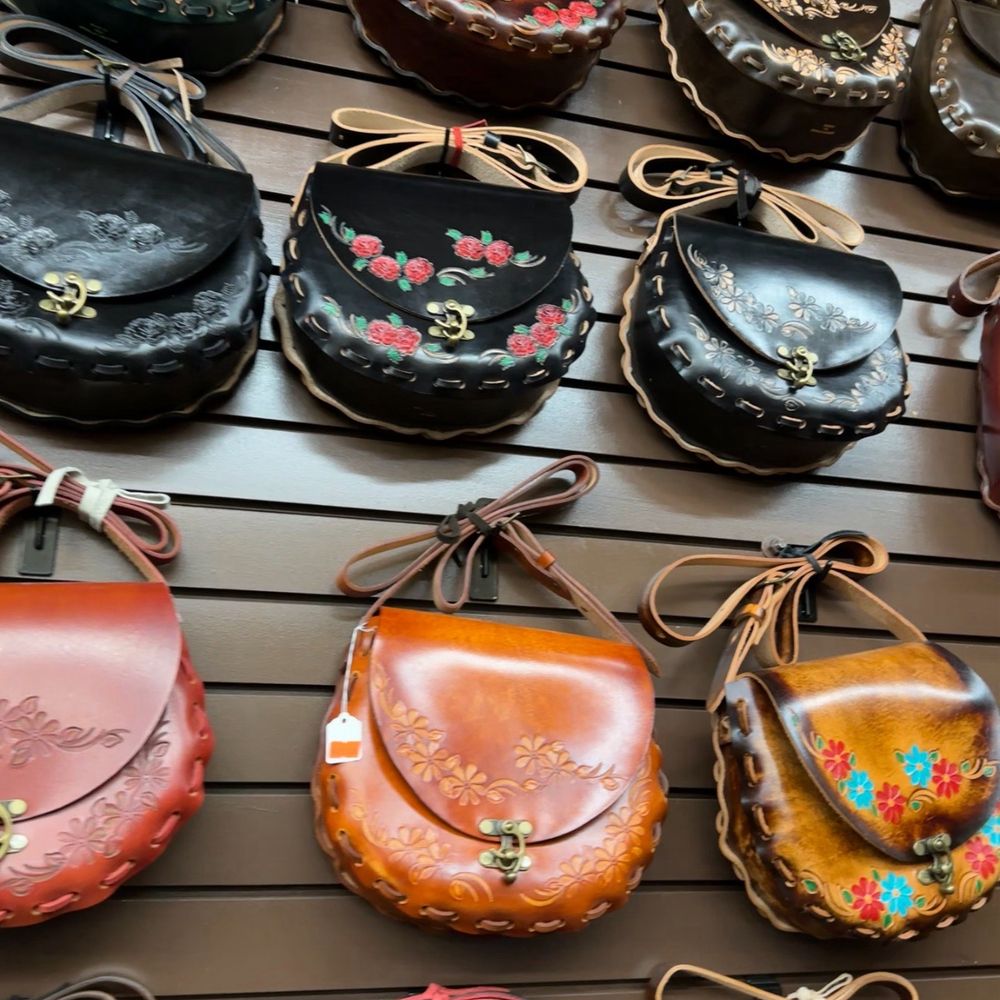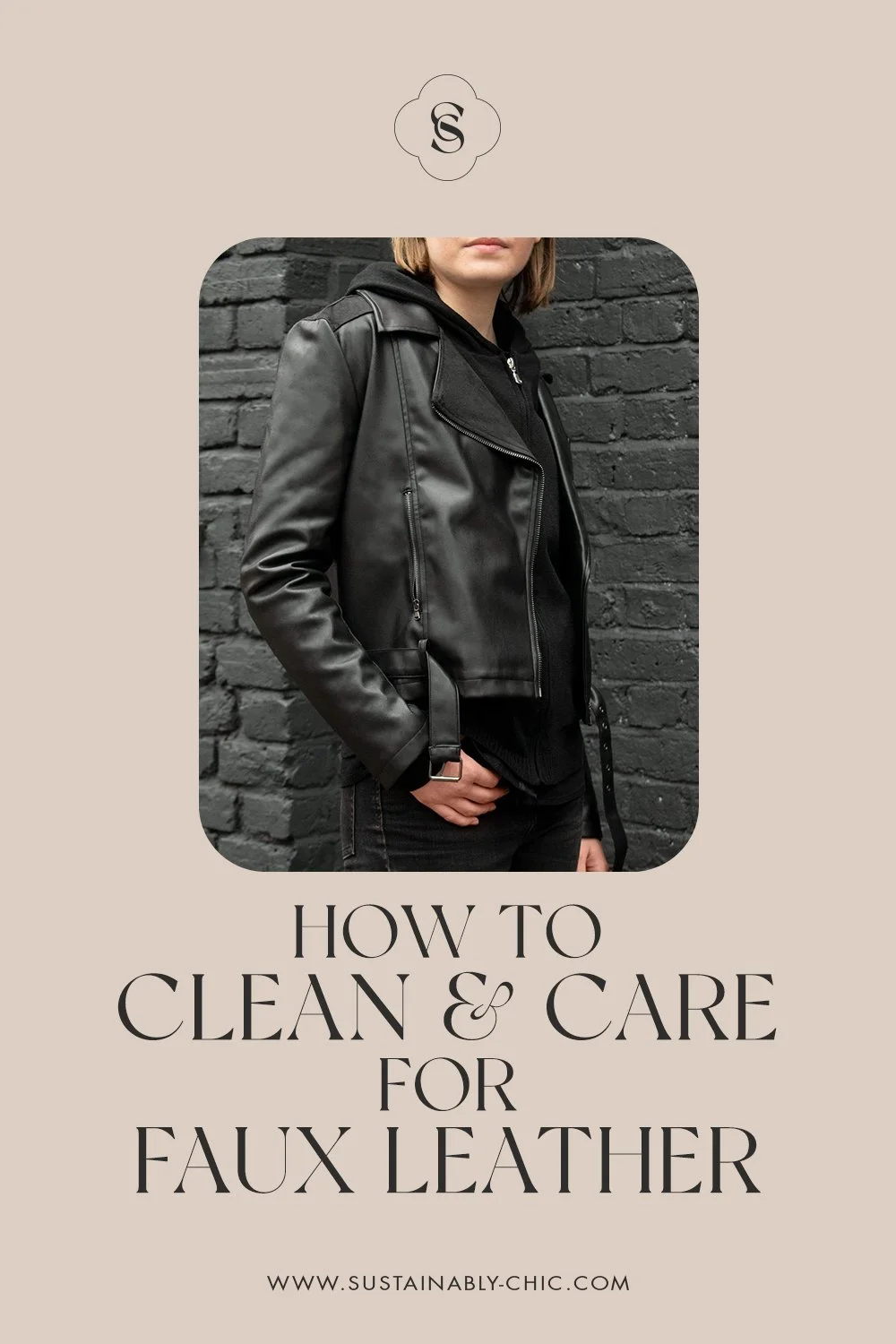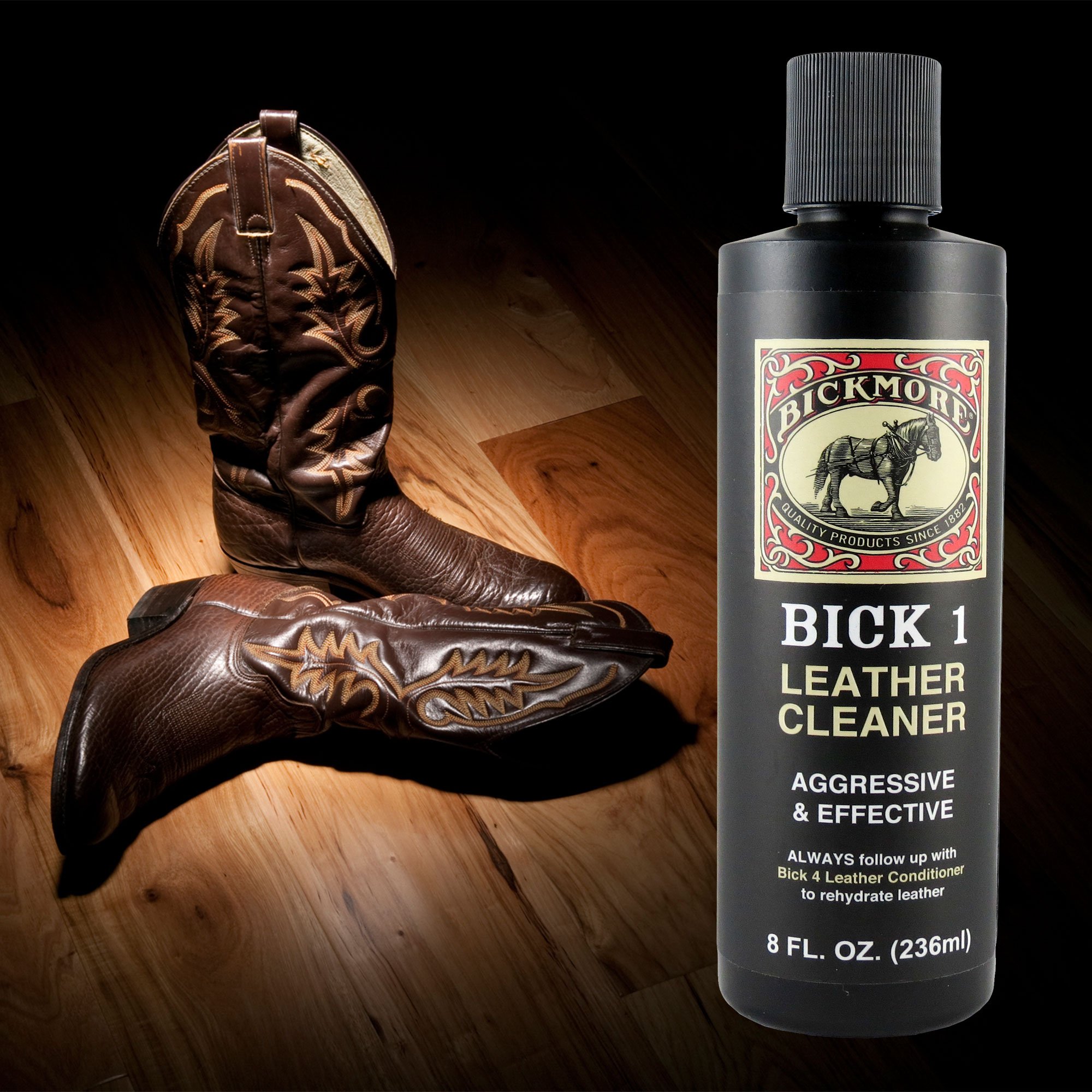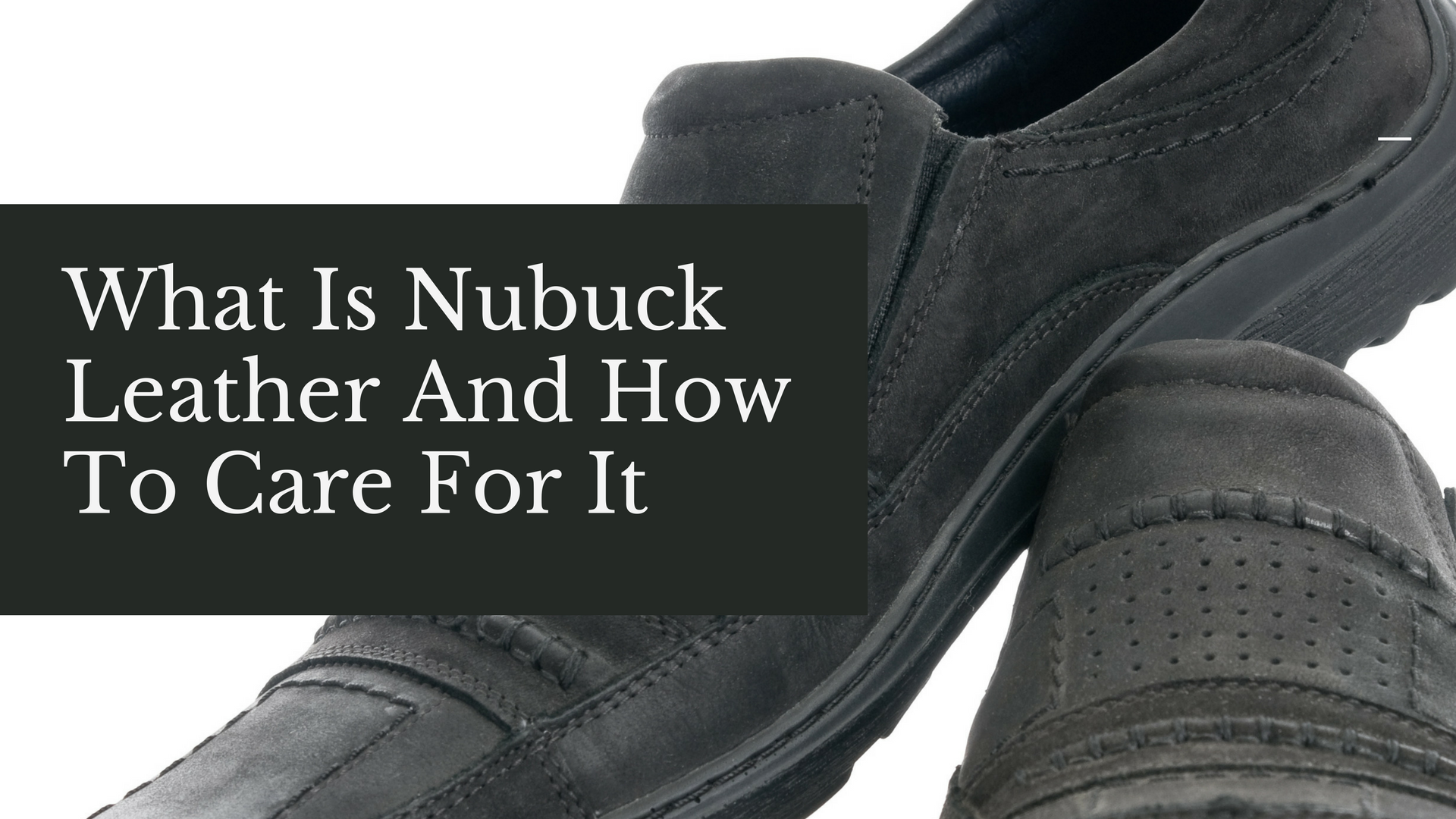Introduction: Navigating the Global Market for synthetic suede
As businesses worldwide strive to meet consumer demands for sustainable and versatile materials, sourcing synthetic suede presents a unique challenge for international B2B buyers. This guide delves into the intricacies of navigating the global market for synthetic suede, offering insights into its diverse types, applications, and the best practices for supplier vetting. With synthetic suede gaining popularity in upholstery, fashion, and accessories due to its leather-like qualities and eco-friendly appeal, understanding the nuances of this material is essential for businesses looking to stay competitive.
Throughout this comprehensive guide, you will find actionable insights tailored for buyers in regions such as Africa, South America, the Middle East, and Europe, including key markets like Nigeria and Germany. We will explore various grades of synthetic suede, their specific applications in different industries, and important considerations such as cost-effectiveness and quality assurance. By equipping you with the necessary knowledge and tools, this guide aims to empower informed purchasing decisions, ensuring that your business can effectively source high-quality synthetic suede while optimizing supply chain efficiency. Whether you are looking to expand your product offerings or enhance your existing inventory, understanding the global landscape of synthetic suede will be pivotal in achieving your business goals.
Table Of Contents
- Top 6 Synthetic Suede Manufacturers & Suppliers List
- Introduction: Navigating the Global Market for synthetic suede
- Understanding synthetic suede Types and Variations
- Key Industrial Applications of synthetic suede
- 3 Common User Pain Points for ‘synthetic suede’ & Their Solutions
- Strategic Material Selection Guide for synthetic suede
- In-depth Look: Manufacturing Processes and Quality Assurance for synthetic suede
- Practical Sourcing Guide: A Step-by-Step Checklist for ‘synthetic suede’
- Comprehensive Cost and Pricing Analysis for synthetic suede Sourcing
- Alternatives Analysis: Comparing synthetic suede With Other Solutions
- Essential Technical Properties and Trade Terminology for synthetic suede
- Navigating Market Dynamics and Sourcing Trends in the synthetic suede Sector
- Frequently Asked Questions (FAQs) for B2B Buyers of synthetic suede
- Strategic Sourcing Conclusion and Outlook for synthetic suede
- Important Disclaimer & Terms of Use
Understanding synthetic suede Types and Variations
| Type Name | Key Distinguishing Features | Primary B2B Applications | Brief Pros & Cons for Buyers |
|---|---|---|---|
| Microsuede | Soft, velvety texture; durable; available in many colors | Upholstery, fashion, event decor | Pros: Soft feel, easy to clean; Cons: Limited outdoor use |
| Ultra-suede | High durability; stain-resistant; luxurious finish | Automotive interiors, high-end fashion | Pros: Long-lasting, easy maintenance; Cons: Higher cost |
| Faux Suede Leather | Leather-like appearance; thicker than traditional suede | Accessories, footwear, upholstery | Pros: Stylish, versatile; Cons: Heavier, less breathable |
| Eco-Suede | Made from recycled materials; eco-friendly | Sustainable fashion, eco-conscious brands | Pros: Environmentally friendly; Cons: May vary in quality |
| Performance Suede | Water-resistant; highly durable; easy to clean | Outdoor gear, heavy-use upholstery | Pros: Functional, ideal for high-traffic areas; Cons: Can be more expensive |
What are the Characteristics of Microsuede and Its B2B Suitability?
Microsuede is a popular type of synthetic suede known for its soft, velvety texture and durability. It is made from 100% polyester and typically weighs around 225 grams per square meter. This fabric is highly versatile, making it suitable for a range of applications including upholstery, fashion items, and event décor. B2B buyers should consider the extensive color options available, which can enhance branding and design aesthetics. However, it’s important to note that microsuede may not be ideal for outdoor applications due to its moisture retention.
How Does Ultra-suede Stand Out for Automotive and Fashion Uses?
Ultra-suede is a premium variant known for its high durability and luxurious finish. It is often used in automotive interiors and high-end fashion due to its stain-resistant properties and elegant appearance. Buyers in the automotive and fashion industries should recognize the long-term investment benefits of ultra-suede, as it can withstand wear and tear while maintaining its aesthetic appeal. However, the higher cost may be a consideration for budget-conscious buyers.
Why Choose Faux Suede Leather for Versatile Applications?
Faux suede leather offers a stylish alternative to traditional leather, providing a leather-like appearance while being lighter and more versatile. It is commonly used in accessories, footwear, and upholstery. B2B buyers can benefit from its adaptability in various design contexts, but should be aware that the thickness of faux suede leather may limit its breathability, making it less suitable for certain applications.
What Are the Benefits of Eco-Suede for Sustainable Brands?
Eco-suede is crafted from recycled materials, making it an excellent choice for businesses focused on sustainability. This fabric appeals to eco-conscious brands and consumers seeking environmentally friendly options. While eco-suede can enhance a brand’s sustainability narrative, buyers should be mindful of potential quality variations, which may affect product consistency.
How Does Performance Suede Enhance Durability for Heavy-Use Applications?
Performance suede is designed for high durability and water resistance, making it ideal for outdoor gear and heavy-use upholstery. This fabric is engineered to withstand challenging environments, making it a practical choice for businesses in the outdoor and hospitality sectors. While performance suede offers functionality, it may come at a higher price point, which is a key consideration for budget-driven projects.
Key Industrial Applications of synthetic suede
| Industry/Sector | Specific Application of Synthetic Suede | Value/Benefit for the Business | Key Sourcing Considerations for this Application |
|---|---|---|---|
| Fashion & Apparel | Clothing and Accessories | Provides a luxurious look and feel at a lower cost than genuine suede; versatile for various styles. | Ensure colorfastness, durability, and compliance with international textile regulations. |
| Automotive | Upholstery and Interior Design | Enhances vehicle aesthetics and comfort while being easier to clean and maintain than leather. | Verify compatibility with automotive standards and resistance to wear and tear. |
| Furniture & Home Decor | Upholstery for Sofas and Chairs | Offers a soft, elegant finish while being more stain-resistant and easier to maintain than natural materials. | Look for suppliers that offer a wide range of colors and textures to meet diverse design needs. |
| Event Management | Decorative Elements for Events | Provides an upscale appearance for event décor without the high costs associated with real suede. | Consider bulk purchasing options and availability of custom colors to suit specific themes. |
| Footwear | Shoe Linings and Uppers | Combines comfort and style, while also being a sustainable alternative to animal leather. | Assess breathability and flexibility to ensure comfort and longevity in footwear applications. |
How is Synthetic Suede Used in the Fashion and Apparel Industry?
In the fashion and apparel sector, synthetic suede is utilized for creating a range of clothing items and accessories, from jackets to handbags. Its soft texture mimics genuine suede, offering an upscale aesthetic without the associated costs. For international buyers, particularly in regions like Africa and Europe, sourcing high-quality synthetic suede that meets durability and colorfastness standards is crucial. This ensures that the final products not only appeal to consumers but also withstand regular use.
What Role Does Synthetic Suede Play in Automotive Upholstery?
Automotive manufacturers and suppliers often turn to synthetic suede for vehicle interiors due to its luxurious feel and ease of maintenance. This material is particularly advantageous as it resists stains better than leather and can be cleaned easily, making it ideal for family vehicles. B2B buyers must ensure that the synthetic suede meets automotive safety standards and can endure the wear and tear of daily use, especially in regions with diverse climates like the Middle East.
How is Synthetic Suede Applied in Furniture and Home Decor?
In the furniture industry, synthetic suede is frequently used for upholstery on sofas, chairs, and decorative cushions. Its soft, inviting texture enhances the overall aesthetic of living spaces while providing practical benefits such as stain resistance. For buyers in South America and Europe, sourcing synthetic suede that offers a variety of colors and patterns can help them cater to diverse consumer preferences and interior design trends.
Why is Synthetic Suede Important for Event Management?
Event planners utilize synthetic suede for decorative elements, including table covers, drapes, and seating. The material’s elegant appearance can elevate the ambiance of events, from weddings to corporate gatherings, without incurring the high costs of real suede. B2B buyers should consider suppliers that offer bulk purchase options and customization to align with specific event themes, ensuring a cohesive and appealing presentation.
What are the Benefits of Using Synthetic Suede in Footwear?
In the footwear industry, synthetic suede serves as a popular choice for shoe linings and uppers, combining comfort with a stylish look. Its sustainable nature, being a cruelty-free alternative to leather, appeals to environmentally conscious consumers. Buyers should evaluate the breathability and flexibility of the material to guarantee comfort and durability, particularly in diverse climatic conditions across regions like Nigeria and Germany.
3 Common User Pain Points for ‘synthetic suede’ & Their Solutions
Scenario 1: Sourcing Quality Synthetic Suede Fabrics for Diverse Applications
The Problem: B2B buyers often face the challenge of sourcing high-quality synthetic suede that meets specific application requirements, whether it be for upholstery, fashion, or automotive industries. Given the variety of suppliers and the risk of receiving subpar materials, buyers may struggle with inconsistent quality, leading to potential project delays and increased costs. Additionally, concerns about the durability and sustainability of synthetic suede can complicate the selection process.

Illustrative image related to synthetic suede
The Solution: To overcome this challenge, buyers should prioritize establishing relationships with reputable suppliers who provide comprehensive product specifications. When sourcing synthetic suede, request detailed information about fabric composition, durability ratings, and cleaning instructions. It’s also wise to order sample swatches before making bulk purchases; this helps in assessing color accuracy and texture consistency. Furthermore, consider suppliers who offer transparency regarding their manufacturing processes, especially if sustainability is a priority. By focusing on suppliers with proven track records and certifications, B2B buyers can ensure they receive reliable products that align with their quality standards.
Scenario 2: Managing Dye Lot Variations in Bulk Orders
The Problem: A common pain point for B2B buyers of synthetic suede is the variability in dye lots. When placing large orders, buyers may receive materials that do not match previous batches due to differences in dyeing processes. This inconsistency can lead to mismatched colors in finished products, ultimately damaging brand reputation and customer satisfaction.
The Solution: To mitigate this issue, buyers should implement a robust ordering process that includes clear communication with suppliers about dye lot expectations. It’s crucial to specify the need for materials from the same dye lot when placing orders, particularly for large-scale projects. Buyers should also maintain a record of previous orders and communicate with suppliers to ensure continuity in color matching. If possible, request a color confirmation sample before the full order is processed. Additionally, consider working with suppliers who have a strong quality control protocol in place for dyeing processes. This proactive approach can help ensure that all materials meet the required color specifications, reducing the risk of discrepancies.
Scenario 3: Understanding Maintenance and Care Requirements
The Problem: B2B buyers may struggle with understanding the maintenance and care requirements for synthetic suede products, particularly when it comes to cleaning and longevity. Misunderstanding these requirements can lead to fabric damage, reduced lifespan, and increased replacement costs, especially in high-use environments such as commercial upholstery or automotive interiors.
The Solution: To ensure optimal care and maintenance of synthetic suede, buyers should seek out comprehensive care guides from manufacturers or suppliers. It is advisable to create a standardized maintenance protocol for staff that includes specific cleaning methods, recommended products, and frequency of care. For instance, many synthetic suedes are best maintained through dry cleaning rather than washing, which could lead to damage. Implementing regular training for staff on proper care techniques can enhance the longevity of the materials. Furthermore, consider investing in protective treatments that can enhance the fabric’s resistance to stains and wear. By proactively addressing maintenance issues, buyers can significantly improve the durability of their synthetic suede products, ultimately leading to better customer satisfaction and reduced costs over time.
Strategic Material Selection Guide for synthetic suede
What Are the Key Materials Used in Synthetic Suede Production?
When selecting synthetic suede for various applications, understanding the different materials involved is crucial for B2B buyers. Here, we analyze four common materials used in the production of synthetic suede, focusing on their properties, advantages, disadvantages, and considerations for international markets.
1. Polyester
Key Properties: Polyester is a synthetic fiber known for its durability and resistance to shrinking and stretching. It can withstand a wide range of temperatures and is generally resistant to mildew and abrasion.
Pros & Cons: The primary advantage of polyester is its affordability and versatility, making it suitable for a variety of applications, including upholstery and fashion. However, it may not be as breathable as natural fibers, which can be a drawback in certain climates.
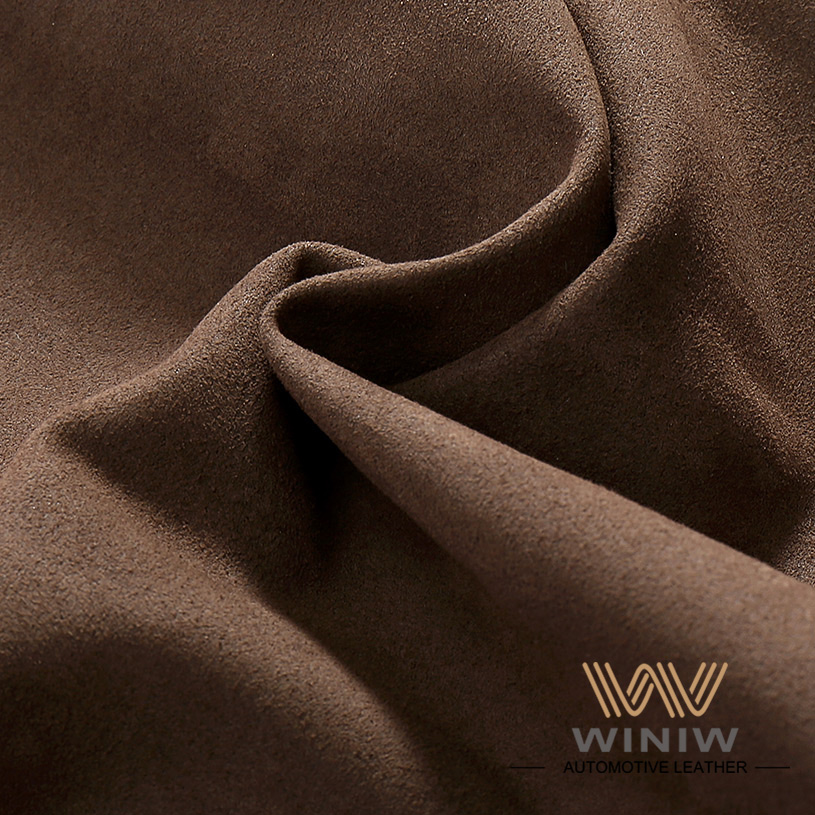
Illustrative image related to synthetic suede
Impact on Application: Polyester synthetic suede is compatible with various media, including dye sublimation and screen printing, making it ideal for custom designs.
Considerations for International Buyers: Buyers from regions like Africa and South America should consider the availability of polyester and its compliance with local textile regulations, such as ASTM standards.
2. Microfiber
Key Properties: Microfiber is composed of ultra-fine synthetic fibers, typically polyester and polyamide. This material is known for its softness and high absorbency, as well as its resistance to stains and fading.
Pros & Cons: The softness of microfiber provides a luxurious feel, making it popular in the fashion and home decor industries. However, its production can be more complex and costly compared to standard polyester.
Impact on Application: Microfiber synthetic suede is particularly effective for high-end applications, such as luxury upholstery and automotive interiors.

Illustrative image related to synthetic suede
Considerations for International Buyers: Buyers in Europe, such as those in Germany, should be aware of the stringent environmental regulations regarding microfiber production and disposal, including compliance with EU standards.
3. PU (Polyurethane)
Key Properties: PU is a versatile polymer that can mimic the properties of leather. It offers excellent flexibility and durability while being resistant to water and stains.
Pros & Cons: The key advantage of PU synthetic suede is its leather-like appearance and feel, making it a popular choice for fashion and high-end upholstery. However, it can be more expensive than other synthetic options and may not be as breathable.
Impact on Application: PU is often used in applications requiring a premium look and feel, such as handbags and shoes.
Considerations for International Buyers: Buyers from the Middle East should consider the climate’s impact on PU products, as high temperatures can affect the material’s longevity. Compliance with local regulations regarding chemical use in PU production is also essential.
4. PVC (Polyvinyl Chloride)
Key Properties: PVC is a widely used plastic that offers good durability and resistance to moisture. It can be produced in various thicknesses and textures, making it versatile for different applications.
Pros & Cons: The main advantage of PVC synthetic suede is its cost-effectiveness and ease of manufacturing. However, it is less environmentally friendly and can emit harmful chemicals during production.
Impact on Application: PVC is commonly used in applications like outdoor furniture and automotive interiors, where water resistance is crucial.
Considerations for International Buyers: Buyers in regions with strict environmental regulations, such as Europe, must ensure that PVC products meet compliance standards, including REACH regulations.
Summary Table of Material Selection for Synthetic Suede
| Material | Typical Use Case for synthetic suede | Key Advantage | Key Disadvantage/Limitation | Relative Cost (Low/Med/High) |
|---|---|---|---|---|
| Polyester | Upholstery, fashion | Affordable and versatile | Less breathable than natural fibers | Low |
| Microfiber | Luxury upholstery, automotive | Soft and luxurious feel | Higher production cost | Med |
| PU | High-end fashion, handbags | Leather-like appearance | More expensive, less breathable | High |
| PVC | Outdoor furniture, automotive | Cost-effective and durable | Environmental concerns | Low |
This guide provides a comprehensive overview of the materials commonly used in synthetic suede production, enabling B2B buyers to make informed decisions based on their specific needs and regional considerations.
In-depth Look: Manufacturing Processes and Quality Assurance for synthetic suede
What Are the Key Stages in the Manufacturing Process of Synthetic Suede?
The production of synthetic suede involves several critical stages, ensuring that the final product meets the high standards expected in various industries, from fashion to upholstery. Understanding these stages can help B2B buyers make informed decisions when sourcing synthetic suede for their needs.
Material Preparation: What Raw Materials Are Used?
The primary raw material for synthetic suede is polyester, often combined with polyurethane to enhance durability and softness. The manufacturing process begins with the preparation of these materials, which may involve spinning polyester fibers into a non-woven fabric. This non-woven base is essential for creating the soft, suede-like texture that characterizes synthetic suede.
Additionally, manufacturers may utilize various additives to improve characteristics such as colorfastness, water resistance, and flame retardancy. Buyers should inquire about the specific materials used, as this can affect the fabric’s performance in different applications.
How is Synthetic Suede Formed and Assembled?
Once the materials are prepared, the next stage involves forming the synthetic suede. This typically occurs through a process known as “coating,” where a mixture of polyurethane is applied to the non-woven polyester base. This step is crucial for achieving the desired softness and texture.
The coated fabric is then subjected to a variety of mechanical processes, including embossing and brushing, to create the characteristic nap of suede. These processes can also involve heat setting to ensure that the fabric retains its shape and texture under stress.
After forming, the synthetic suede may be cut and assembled into the final product, whether it be upholstery, clothing, or accessories. This assembly stage is often where customization takes place, with options for colors, patterns, and finishes.
What Finishing Techniques Enhance the Quality of Synthetic Suede?
Finishing is a vital stage in the manufacturing process, where additional treatments are applied to enhance the fabric’s appearance and functionality. Common finishing techniques include dyeing, which allows for a wide range of color options, and treatments that provide water and stain resistance.
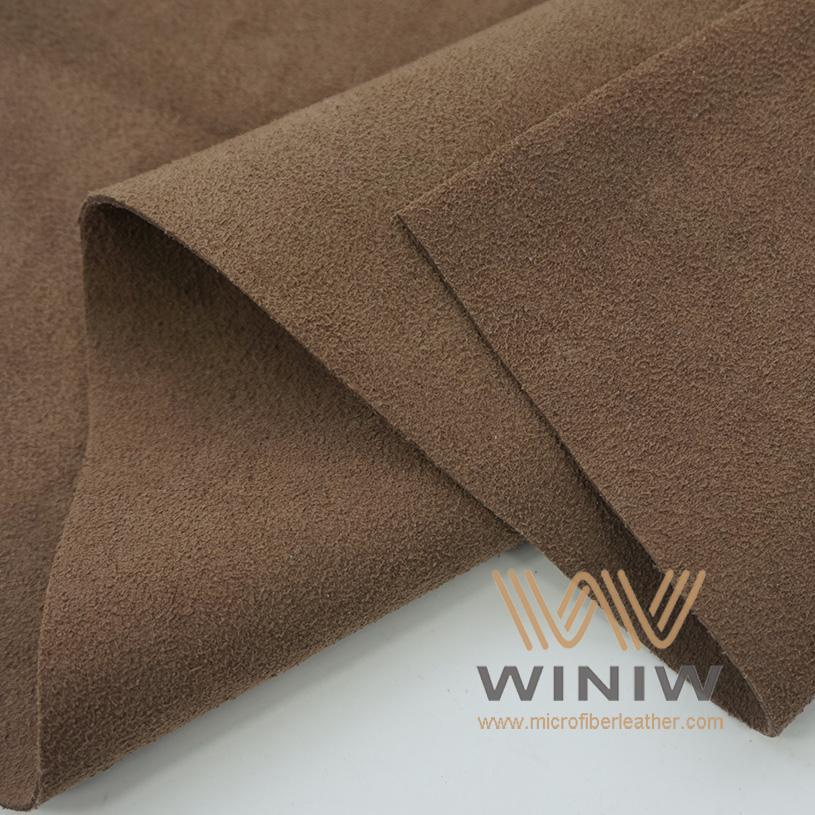
Illustrative image related to synthetic suede
Quality manufacturers often implement a final brushing process to ensure that the fabric has a uniform nap, which is essential for aesthetics and tactile quality. Buyers should seek suppliers that use high-quality dyes and finishes to ensure longevity and performance in their applications.
What Quality Assurance Measures Should B2B Buyers Expect?
Quality assurance (QA) is a critical aspect of synthetic suede manufacturing, ensuring that products meet international standards and buyer specifications. Understanding these QA measures can help B2B buyers select reliable suppliers.
Which International Standards Should Be Considered for Synthetic Suede?
B2B buyers should look for suppliers that comply with relevant international standards, such as ISO 9001, which focuses on quality management systems. This certification indicates that a manufacturer has established processes for maintaining quality throughout production.
Additionally, industry-specific certifications such as CE marking for European markets or API standards for specific applications can signal a commitment to quality and safety. Buyers should inquire about these certifications to ensure compliance with regional regulations and standards.
What Are the Key Quality Control Checkpoints in Manufacturing?
Quality control (QC) is integral to the manufacturing process of synthetic suede, typically involving several checkpoints to maintain product integrity:
-
Incoming Quality Control (IQC): This initial checkpoint assesses raw materials before production begins. Suppliers should perform tests to ensure that materials meet specified standards for quality and safety.
-
In-Process Quality Control (IPQC): Throughout the manufacturing process, regular inspections are conducted to monitor parameters such as texture, color, and strength. This step helps identify any deviations early, reducing waste and ensuring consistency.
-
Final Quality Control (FQC): Before shipping, the finished products undergo a comprehensive evaluation to ensure they meet the established specifications. This may include physical tests for durability, colorfastness, and overall appearance.
How Can B2B Buyers Verify Supplier Quality Control Practices?
To ensure that suppliers adhere to high-quality standards, B2B buyers can take several steps:
-
Conduct Audits: Regular audits of the manufacturing facilities can provide insight into the supplier’s processes and adherence to quality standards. Buyers should consider scheduling on-site visits or requesting audit reports.
-
Request Quality Reports: Suppliers should be able to provide documentation detailing their quality control measures, including results from IQC, IPQC, and FQC processes. This transparency is essential for building trust.
-
Engage Third-Party Inspectors: Utilizing independent third-party inspection services can offer an unbiased assessment of the products before they are shipped. This can be particularly valuable for international buyers who may not have the capability to perform on-site inspections.
What Unique Considerations Should International Buyers Keep in Mind?
For B2B buyers from regions such as Africa, South America, the Middle East, and Europe, specific considerations can impact sourcing synthetic suede:
-
Understanding Regional Standards: Different regions may have varying regulations regarding textile production. Buyers should familiarize themselves with local compliance requirements, such as environmental regulations and consumer safety standards.
-
Evaluating Supply Chain Reliability: Given the global nature of textile sourcing, understanding the supply chain’s reliability is crucial. Buyers should assess suppliers’ capabilities to meet delivery timelines and manage logistics effectively.
-
Cultural Preferences and Market Trends: Different markets may have unique preferences for synthetic suede characteristics, such as color, texture, and performance. Conducting market research can help buyers select products that align with consumer expectations in their regions.
By understanding the manufacturing processes and quality assurance measures associated with synthetic suede, B2B buyers can make informed choices that align with their business needs and ensure high-quality products.
Practical Sourcing Guide: A Step-by-Step Checklist for ‘synthetic suede’
In the world of textile sourcing, especially for synthetic suede, a structured approach is essential for ensuring quality, compliance, and profitability. This checklist is designed to guide B2B buyers through the critical steps of sourcing synthetic suede effectively.

Illustrative image related to synthetic suede
Step 1: Define Your Technical Specifications
Before initiating any sourcing activity, it’s vital to establish clear technical specifications for the synthetic suede you need. This includes determining the desired thickness, texture, color options, and weight. Specifications will directly impact product performance and customer satisfaction, making this step foundational.
- Consider usage: Are you sourcing for upholstery, fashion, or accessories? Each application might require different properties.
- Document requirements: Create a comprehensive document outlining these specifications to share with potential suppliers.
Step 2: Research and Shortlist Potential Suppliers
Conduct thorough research to identify potential suppliers who specialize in synthetic suede. Look for manufacturers with a proven track record in quality and reliability, particularly those who have experience serving markets similar to yours.
- Leverage online platforms: Utilize B2B marketplaces and directories to find reputable suppliers.
- Check reviews and ratings: Investigate feedback from previous clients to gauge supplier reliability and quality.
Step 3: Evaluate Potential Suppliers
Before committing, it’s crucial to vet suppliers thoroughly. Request company profiles, case studies, and references from buyers in a similar industry or region. Don’t just rely on their website; seek out independent reviews and testimonials.
- Assess production capabilities: Ensure the supplier can meet your volume requirements and timelines.
- Verify quality assurance processes: Ask about their quality control measures and certifications to ensure compliance with industry standards.
Step 4: Request Samples for Evaluation
Once you have shortlisted potential suppliers, request samples of their synthetic suede. This is an essential step to verify the quality and suitability of the materials for your intended use.
- Inspect samples: Evaluate the texture, color accuracy, and overall finish. Ensure it aligns with your specifications.
- Conduct performance tests: If possible, perform durability tests to assess how well the material holds up under stress or wear.
Step 5: Negotiate Terms and Pricing
Once you have found a supplier that meets your quality expectations, enter into negotiations regarding pricing, terms of payment, and delivery schedules. Effective negotiation can lead to favorable terms that benefit your bottom line.
- Understand market pricing: Research current market rates for synthetic suede to ensure your negotiations are grounded in reality.
- Discuss minimum order quantities: Clarify any minimum order requirements to avoid unexpected costs.
Step 6: Review Legal and Compliance Aspects
Ensure that any agreement with the supplier complies with international trade regulations and any specific legal requirements in your region. This is particularly important when sourcing textiles that may have regulatory implications.
- Check documentation: Ensure all necessary import/export documents are in order.
- Understand warranty and return policies: Know your rights regarding product quality and potential returns.
Step 7: Establish a Logistics Plan
Finally, develop a logistics plan that outlines how the synthetic suede will be transported from the supplier to your location. This includes considering shipping options, costs, and estimated delivery times.
- Evaluate shipping methods: Depending on urgency and budget, decide between air freight and sea freight.
- Coordinate with customs: Ensure you are prepared for any customs procedures that may affect delivery times.
By following this comprehensive checklist, B2B buyers can streamline their sourcing process for synthetic suede, ensuring they secure high-quality materials that meet their business needs.
Comprehensive Cost and Pricing Analysis for synthetic suede Sourcing
What Are the Key Cost Components for Synthetic Suede Sourcing?
When evaluating the cost structure of synthetic suede, several components contribute significantly to the final pricing. The primary costs include materials, labor, manufacturing overhead, tooling, quality control (QC), logistics, and the supplier’s margin.
-
Materials: The base material for synthetic suede is typically polyester, which is less expensive than natural suede. However, variations in quality and sourcing can impact the cost. Higher-quality polyester or blends with other materials may increase the price.
-
Labor: Labor costs can vary widely based on the manufacturing location. Countries with lower labor costs may offer competitive pricing, but it’s crucial to consider the potential trade-offs in quality and production efficiency.
-
Manufacturing Overhead: This includes costs associated with factory operations, such as utilities and maintenance. Efficient manufacturing processes can reduce overhead and, consequently, the overall price of the synthetic suede.
-
Tooling: Custom tooling for specific designs or patterns can add to the initial costs but may be beneficial for large-scale orders. Investment in tooling is often justified by the reduction in per-unit costs when producing higher volumes.
-
Quality Control (QC): Rigorous QC processes ensure that the synthetic suede meets specified standards. While this adds to the cost, it can prevent returns and dissatisfaction, ultimately saving money in the long run.
-
Logistics: Transportation costs can vary significantly depending on the supplier’s location and the buyer’s delivery requirements. Incorporating logistics into the total cost of ownership is essential for accurate budgeting.
-
Margin: Suppliers will typically mark up prices to ensure profitability. Understanding the margins involved can help buyers negotiate better deals.
How Do Price Influencers Affect Synthetic Suede Costs?
Several factors can influence the pricing of synthetic suede, particularly for international buyers.
-
Volume/MOQ: Minimum order quantities (MOQs) can significantly affect pricing. Larger orders generally lead to lower per-unit costs, making it advantageous for businesses to consolidate purchases.
-
Specifications/Customization: Custom designs and specifications can drive costs up. Buyers should weigh the benefits of customization against the increased expense.
-
Materials and Quality Certifications: The choice of materials and any certifications (e.g., eco-friendly or hypoallergenic) can influence price. Buyers seeking specific qualities should expect to pay a premium.
-
Supplier Factors: The reputation, location, and reliability of suppliers are crucial. Established suppliers may charge more but often offer better quality assurance and customer service.
-
Incoterms: The terms of trade can affect costs significantly. Understanding Incoterms can help buyers manage logistics costs and responsibilities.
What Are the Best Buyer Tips for Cost-Efficient Synthetic Suede Sourcing?
To maximize cost-efficiency when sourcing synthetic suede, international buyers should consider the following strategies:
-
Negotiation: Establish a solid relationship with suppliers and engage in negotiations to secure better pricing. Understanding the supplier’s cost structure can provide leverage in discussions.
-
Total Cost of Ownership (TCO): Evaluate the TCO rather than just the initial price. Factors such as shipping, handling, and potential returns should be included in the overall assessment.
-
Pricing Nuances for International Buyers: Different regions may have varying pricing norms. For instance, buyers from Africa and South America may encounter different shipping costs and import duties compared to European buyers. Being aware of these nuances can lead to better decision-making.
-
Sample Orders: Before committing to large purchases, consider ordering samples to assess quality and color. This reduces the risk of expensive returns due to unsatisfactory products.
Disclaimer on Indicative Prices
It’s important to note that prices for synthetic suede can fluctuate based on market conditions, supplier negotiations, and changes in material costs. Always seek updated quotes and consider multiple suppliers to ensure competitive pricing.
Alternatives Analysis: Comparing synthetic suede With Other Solutions
Understanding Alternatives to Synthetic Suede
When considering materials for upholstery, fashion, or other applications, synthetic suede is often a top choice due to its versatility and aesthetic appeal. However, there are various alternative materials available that may better suit specific needs or preferences. This section analyzes synthetic suede in comparison with other viable alternatives, helping B2B buyers make informed decisions.
| Comparison Aspect | Synthetic Suede | Microsuede | Natural Leather |
|---|---|---|---|
| Performance | Durable and water-resistant | Soft texture, durable | High durability, luxurious feel |
| Cost | Moderate cost | Generally lower cost | Higher cost due to sourcing and processing |
| Ease of Implementation | Easily cut and sewn | Similar ease of use | Requires specialized tools for working |
| Maintenance | Easy to clean, machine washable | Requires dry cleaning | Requires conditioning and special care |
| Best Use Case | Upholstery, garments, accessories | Upholstery, fashion items | High-end fashion, luxury goods |
In-Depth Analysis of Alternatives
Microsuede: A Cost-Effective Alternative
Microsuede is a synthetic fabric that mimics the texture and appearance of natural suede. It offers a soft touch and is available in a broad range of colors, making it appealing for various applications, from upholstery to fashion accessories. The key advantage of microsuede is its cost-effectiveness; it is generally more affordable than synthetic suede while still providing a luxurious feel. However, it is typically dry clean only, which can increase maintenance efforts for businesses that prioritize ease of care.
Natural Leather: The Luxury Choice
Natural leather is often viewed as the gold standard in materials for high-end products. Its durability and rich texture make it an excellent choice for luxury goods, providing a timeless aesthetic. However, it comes at a significantly higher cost and requires more meticulous care, including regular conditioning to maintain its appearance. For businesses targeting the luxury market, natural leather can be a worthwhile investment, but it may not be practical for those with budget constraints or lower-end product lines.
Making the Right Choice for Your Business Needs
When selecting a material for your products, consider the specific requirements of your target market. If you are aiming for a cost-sensitive demographic, microsuede may be the most suitable option, providing both quality and affordability. Conversely, if your brand is positioned in the luxury segment, investing in natural leather could enhance your product’s appeal and marketability. Synthetic suede remains a robust middle-ground choice, offering durability and ease of care suitable for a wide range of applications.
Ultimately, the decision should align with your brand identity, customer expectations, and operational capabilities. By carefully weighing the pros and cons of each alternative, B2B buyers can make informed choices that support their business goals and customer satisfaction.
Essential Technical Properties and Trade Terminology for synthetic suede
What Are the Key Technical Properties of Synthetic Suede?
Understanding the essential properties of synthetic suede is vital for B2B buyers in various sectors, including upholstery, fashion, and automotive applications. Here are several critical specifications that influence purchasing decisions:
1. Material Composition
Synthetic suede is primarily made from polyester fibers, which provide a soft, velvety texture similar to natural suede. The blend may also include polyurethane (PU) for enhanced durability and moisture resistance. B2B buyers should assess the material composition to ensure it meets their specific application needs, such as wear resistance or ease of cleaning.
2. Fabric Weight
Measured in grams per square meter (GSM), fabric weight is a crucial indicator of quality and durability. Synthetic suede typically ranges from 200 to 300 GSM. Heavier fabrics are often more durable and suitable for high-traffic areas, while lighter weights may be used for fashion applications where flexibility is required. Understanding fabric weight helps businesses select the right product for their intended use.
3. Width and Roll Length
Synthetic suede is commonly available in widths of 58 to 60 inches, with roll lengths typically around 65 yards. For large-scale projects, knowing the available width and length is essential for calculating material requirements and minimizing waste. B2B buyers should ensure that the dimensions fit their manufacturing processes or product designs.
4. Color Fastness
This property indicates how well the fabric retains its color after exposure to washing, light, and rubbing. Synthetic suede should have good color fastness ratings (usually rated on a scale of 1 to 5). Higher ratings indicate greater durability in maintaining color integrity, which is particularly important for fashion and upholstery applications where aesthetics are key.
5. Cleaning and Maintenance
Most synthetic suedes are labeled as dry clean only, which can impact the end-use market. Buyers should consider the cleaning requirements and communicate these to their customers, especially in sectors like hospitality or automotive, where ease of maintenance is a priority.
6. Flame Retardancy
For applications in public spaces or vehicles, flame retardancy is a critical property. Synthetic suede can be treated to meet specific fire safety standards. Buyers should inquire about certifications to ensure compliance with local regulations.
What Are Common Trade Terms Related to Synthetic Suede?
Familiarity with industry jargon is essential for effective communication in B2B transactions. Here are some common terms that buyers should know:
1. OEM (Original Equipment Manufacturer)
OEM refers to a company that produces parts or equipment that may be marketed by another manufacturer. In the context of synthetic suede, an OEM may produce fabric for a fashion brand, ensuring that the material meets specific quality and design standards.
2. MOQ (Minimum Order Quantity)
This term indicates the smallest quantity of product that a supplier is willing to sell. Understanding MOQ is crucial for B2B buyers, as it can affect inventory management and budgeting. Suppliers often set MOQs to ensure profitability.
3. RFQ (Request for Quotation)
An RFQ is a document that a buyer sends to suppliers to solicit pricing and terms for specific products. When purchasing synthetic suede, an RFQ can help businesses compare offers and negotiate better deals.
4. Incoterms (International Commercial Terms)
Incoterms define the responsibilities of buyers and sellers in international transactions, covering aspects like shipping, insurance, and tariffs. Knowing the applicable Incoterms is essential for avoiding misunderstandings and ensuring smooth logistics when importing synthetic suede.
5. Dye Lot
A dye lot refers to a batch of fabric dyed together, which can result in slight color variations. This term is critical for buyers who need consistent color across multiple orders. Understanding dye lot management helps ensure product uniformity.
6. Sampling
Sampling is the process of obtaining small swatches of fabric before committing to larger orders. It allows buyers to assess color, texture, and quality, minimizing the risk of dissatisfaction once the bulk order is received.
By understanding these technical properties and industry terms, B2B buyers can make informed decisions when sourcing synthetic suede, ensuring they select the right materials for their specific applications.
Navigating Market Dynamics and Sourcing Trends in the synthetic suede Sector
What Are the Current Market Dynamics and Key Trends in the Synthetic Suede Sector?
The synthetic suede market is experiencing robust growth, driven by the increasing demand for eco-friendly and cost-effective alternatives to natural suede. This trend is particularly pronounced among international B2B buyers from regions such as Africa, South America, the Middle East, and Europe. The rise of e-commerce platforms and digital sourcing technologies is enabling buyers to access a broader range of suppliers, ensuring competitive pricing and enhanced supply chain transparency. Emerging technologies such as AI-driven analytics are also playing a crucial role in optimizing inventory management and forecasting demand.
In addition to these technological advancements, sustainability is becoming a significant driver in the synthetic suede sector. Buyers are increasingly prioritizing suppliers who adhere to sustainable practices and offer materials that are free from harmful chemicals. As consumers worldwide become more environmentally conscious, businesses that align with these values are likely to gain a competitive edge. Furthermore, color variety and texture innovation are essential trends, with manufacturers expanding their offerings to meet diverse customer preferences across various applications, from upholstery and fashion to automotive interiors.
How Is Sustainability Shaping the Synthetic Suede Supply Chain?
Sustainability and ethical sourcing are critical considerations for B2B buyers in the synthetic suede market. The environmental impact of synthetic materials is a growing concern, particularly regarding the use of non-renewable resources and the potential for pollution during production. As a result, many buyers are seeking suppliers who implement eco-friendly practices, such as using recycled materials or adopting processes that reduce water and energy consumption.
Certifications related to sustainability, such as Global Recycled Standard (GRS) or OEKO-TEX, are becoming increasingly important in the decision-making process. These certifications not only assure buyers of the environmental integrity of the products but also enhance brand reputation. Moreover, ethical supply chains that prioritize fair labor practices and transparency are essential to maintain trust with customers. By choosing suppliers who align with these values, businesses can not only mitigate risks but also appeal to a growing segment of consumers who prioritize ethical consumption.
What Is the Historical Context of Synthetic Suede in the B2B Market?
The synthetic suede market has evolved significantly over the past few decades. Initially developed as a cost-effective alternative to natural suede, synthetic suede gained popularity due to its durability and ease of maintenance. The material has found applications across various industries, including fashion, automotive, and upholstery. As technology advanced, the quality of synthetic suede improved, allowing it to mimic the aesthetic appeal of natural suede while offering enhanced performance characteristics.
Over time, the focus has shifted towards sustainability, with manufacturers increasingly adopting eco-friendly production methods. This evolution reflects broader societal shifts toward environmental responsibility, positioning synthetic suede as a viable option for businesses aiming to reduce their ecological footprint while still delivering high-quality products to their customers. As the market continues to grow, understanding these historical trends can provide valuable insights for B2B buyers navigating the complexities of sourcing synthetic suede.
Frequently Asked Questions (FAQs) for B2B Buyers of synthetic suede
1. How do I ensure the quality of synthetic suede before placing a bulk order?
To ensure the quality of synthetic suede, request sample swatches from potential suppliers. This allows you to evaluate the texture, color, and durability firsthand. Additionally, inquire about the fabric’s specifications, such as weight and composition, to confirm it meets your standards. It’s also advisable to ask for third-party quality assurance certifications or reviews from previous buyers. Establishing a clear quality control process, including inspections upon delivery, can further mitigate risks associated with bulk orders.
2. What are the best practices for sourcing synthetic suede from international suppliers?
When sourcing synthetic suede internationally, research suppliers thoroughly by checking their reputation, certifications, and customer reviews. Utilize platforms like Alibaba or Global Sources to compare options. Request detailed product information, including composition and country of origin, to ensure compliance with your local regulations. Establish clear communication channels and consider visiting the supplier’s facility if possible. Finally, negotiate terms that include minimum order quantities (MOQs) and payment options to protect your investment.
3. What customization options are available for synthetic suede products?
Most suppliers offer a range of customization options for synthetic suede, including color selection, thickness, and texture variations. You can also request specific patterns or treatments, such as water resistance or UV protection. To ensure your requirements are met, provide detailed specifications and inquire about the supplier’s capabilities. Additionally, consider the lead times for custom orders, as they may vary depending on the complexity of your request.
4. What is the typical minimum order quantity (MOQ) for synthetic suede?
Minimum order quantities (MOQs) for synthetic suede can vary significantly among suppliers, typically ranging from 50 to 100 yards for standard fabrics. However, for custom colors or treatments, the MOQ may be higher. Always clarify MOQs before placing an order, as some suppliers may offer flexibility based on your needs or establish lower MOQs for first-time buyers. Keep in mind that larger orders might lead to better pricing and shipping terms.
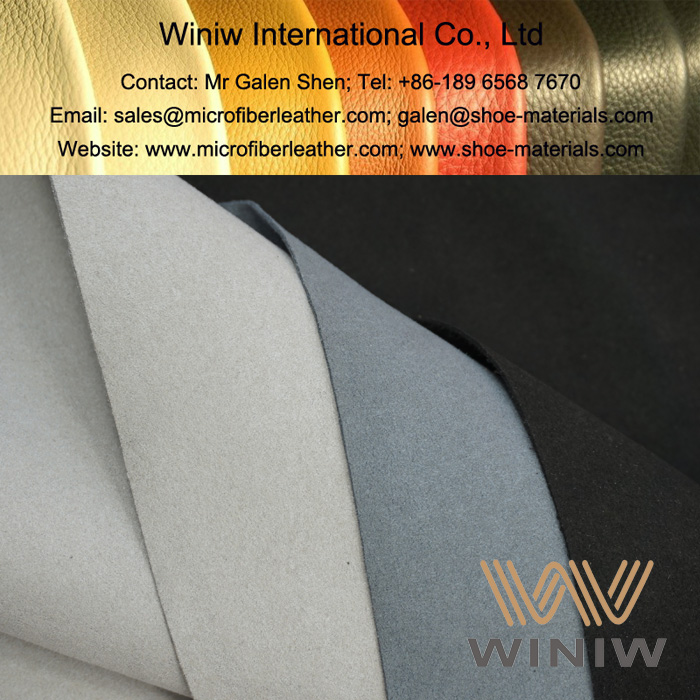
Illustrative image related to synthetic suede
5. What payment terms should I expect when purchasing synthetic suede?
Payment terms for synthetic suede can differ by supplier and region. Common practices include a deposit (usually 30-50%) upfront, with the balance due before shipment. Some suppliers may offer payment via letters of credit, PayPal, or bank transfers. Always negotiate favorable terms that suit your cash flow and ensure protection against potential risks. Additionally, consider using escrow services for larger transactions to safeguard your investment until you receive the goods.
6. How can I verify the reliability of a synthetic suede supplier?
To verify a synthetic suede supplier’s reliability, conduct comprehensive background checks. Look for online reviews and testimonials from previous clients, and request references. Assess their certifications, such as ISO or other quality management systems. Communication is key; prompt and clear responses to inquiries can indicate professionalism. Additionally, consider visiting their manufacturing facility or attending trade shows where they exhibit to better gauge their operations.
7. What logistics considerations should I keep in mind when importing synthetic suede?
When importing synthetic suede, consider shipping methods, customs regulations, and delivery timelines. Choose between air freight for faster delivery or sea freight for cost efficiency, depending on your urgency. Ensure you understand the import duties and taxes applicable in your country to avoid unexpected costs. Partnering with a reliable logistics provider can streamline the process, ensuring compliance with international shipping regulations and timely delivery.
8. What are the cleaning and maintenance recommendations for synthetic suede?
Synthetic suede is typically low-maintenance but requires specific care to prolong its lifespan. Cleaning usually involves dry cleaning or spot cleaning with a damp cloth; avoid machine washing, which can damage the fabric. For stains, use a mild detergent and test on a small area first. To maintain its appearance, store synthetic suede in a cool, dry place away from direct sunlight. Regularly brushing the fabric can also help retain its soft texture.
Top 6 Synthetic Suede Manufacturers & Suppliers List
1. Online Fabric Store – Faux Suede Fabric
Domain: onlinefabricstore.com
Registered: 2000 (25 years)
Introduction: Faux suede fabric available in various colors and widths, suitable for upholstery, clothing, and crafts. Soft texture, durable, and easy to clean. Ideal for DIY projects and home decor.
2. My Textile Fabric – Suede Swatches
3. Levi’s – Faux Suede Trucker Jacket
Domain: reddit.com
Registered: 2005 (20 years)
Introduction: Faux suede trucker jacket from Levi’s; user experiences mention durability of faux suede and rayon; concerns about rayon’s safety and environmental impact; some users report positive experiences with faux suede bombers from Abercrombie lasting 2 years; discussion on the longevity of faux leather versus real leather.
4. Fashion Fabric LA – Performance Faux Suede Microfiber Fabric
Domain: fashionfabricla.com
Registered: 2014 (11 years)
Introduction: Performance Faux Suede Microfiber Fabric – Sold By The Yard
5. Alpha Textile Co – Polyester Faux Suede
Domain: alphatextileco.com
Registered: 2023 (2 years)
Introduction: Polyester faux suede is a man-made material composed of 100% polyester that mimics the appearance of real suede. It is durable, easy to maintain, and more affordable than real suede. Faux suede is strong, rip-resistant, stain-resistant, and machine washable, making it suitable for dressmaking and furnishing applications. It is also water-repellent and breathable. Care instructions recommend using …
6. Panaprium – Suede Fabric
Domain: panaprium.com
Registered: 2017 (8 years)
Introduction: Suede fabric is a leather-like textile made from the hide of animals, primarily from the underside of their skin. Real suede is soft and smooth, made from various animals such as cows, calves, buffaloes, goats, pigs, sheep, and deer. Faux suede, or vegan suede, is a synthetic alternative made from polyester or polyurethane, offering a cheaper and more versatile option. Different types of suede inc…
Strategic Sourcing Conclusion and Outlook for synthetic suede
As the synthetic suede market continues to evolve, strategic sourcing remains pivotal for international buyers seeking quality, cost-effective solutions. Leveraging synthetic suede’s versatility—ranging from upholstery to fashion—enables businesses to capitalize on emerging trends while addressing sustainability concerns. By sourcing from reliable manufacturers, buyers can ensure they receive high-quality products that meet their specifications and ethical standards.
Moreover, understanding the regional dynamics in sourcing synthetic suede can provide competitive advantages. For example, suppliers in Europe and North America may offer innovative designs and materials, while those in Africa and South America may present cost-effective options due to lower labor costs. This diversity allows businesses to tailor their sourcing strategies according to market demands and consumer preferences.
Looking ahead, it is essential for B2B buyers to remain proactive in their sourcing strategies. Engaging with suppliers who prioritize quality and sustainability will not only enhance product offerings but also align with global trends towards eco-friendly practices. As you navigate the synthetic suede market, consider establishing partnerships that foster innovation and ensure long-term success. Embrace the potential of synthetic suede to elevate your product lines and meet the ever-changing needs of your customers.
Important Disclaimer & Terms of Use
⚠️ Important Disclaimer
The information provided in this guide, including content regarding manufacturers, technical specifications, and market analysis, is for informational and educational purposes only. It does not constitute professional procurement advice, financial advice, or legal advice.
While we have made every effort to ensure the accuracy and timeliness of the information, we are not responsible for any errors, omissions, or outdated information. Market conditions, company details, and technical standards are subject to change.
B2B buyers must conduct their own independent and thorough due diligence before making any purchasing decisions. This includes contacting suppliers directly, verifying certifications, requesting samples, and seeking professional consultation. The risk of relying on any information in this guide is borne solely by the reader.


